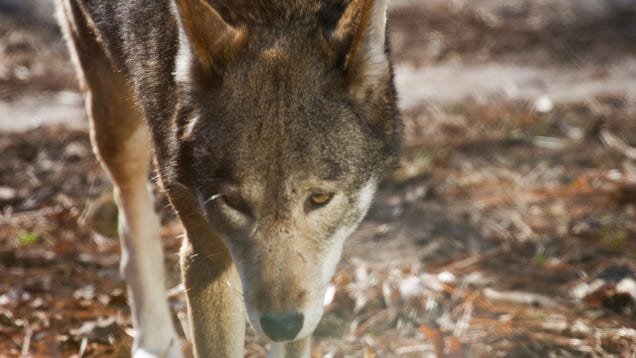
Did
you know there were wolves roaming freely in North Carolina? Neither
did we, so we set out to learn more about this rarest of canids: the Red
Wolf.
"Look,
there they are!" a mother says excitedly, pointing with gloved fingers
in the winter cold. Her two year old daughter, swaddled in a giant, pink
down jacket, face just peaking out through the hood, waddles over to
her mother's side. Taking her hand for reassurance, she draws close to
her mom. Her eyes grow wide and alive; she takes in a quick breath, then
slowly and speaking just above a whisper, says one word: "Wolf…"
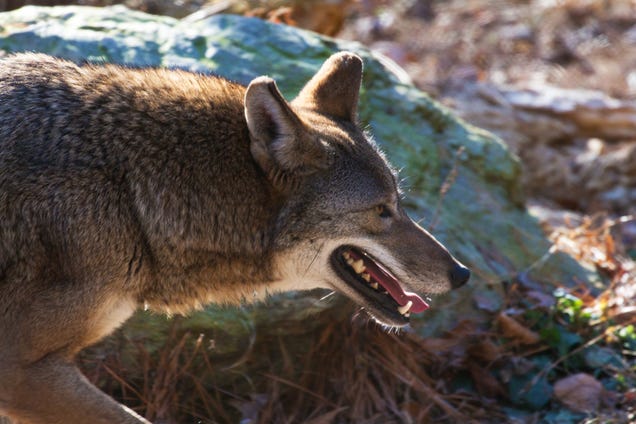
America's Wolf
Placing
each step carefully and delicately, its paws fall quietly through the
fallen leaves as the wolf trots by. Its coat, a mottled grey with hints
of copper, has grown appropriately full for the season. Halting
suddenly, it perks its ears, investigating an unknown sound, only to
take up a steady pace once again.
This
species is one that, at the turn of the century, was brought to the very
brink of extinction only to be tentatively rescued at the last minute.
It is a species that epitomized the New World and its vast, dark forests
to the early European settlers. Yet today few even realize it exists.
The red wolf, Canis rufus,
endemic to the United States, once chased deer from New England
throughout the Southeast and as far west as Texas. Smaller than its
relative, the gray wolf and larger than a coyote, it has the presence of
the former and timidness of the latter. The red wolf seems perfectly
built for racing through the broadleaf forests of the east, taking down
everything from white-tailed deer to small rodents.
With the
arrival of Europeans to these shores, the colonists persecuted the
wolves mercilessly with a bounty offered for their heads. As settlers
pushed further into the American interior the extermination continued;
until in the early 1900s only small, isolated populations remained in
remote corners of Louisiana and Texas. However, these few survivors were
to be thrown a lifeline. In 1967 the red wolf was listed as an endangered species under the Endangered Species Act, putting the fate of this creature in the hands of the federal government.
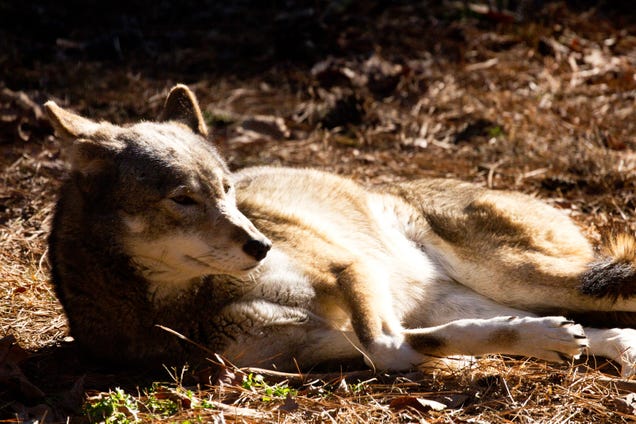
How to experience them
After being
declared biologically extinct in the wild, a carefully managed captive
breeding program was initiated, and the red wolf has since been
reintroduced to the Alligator River National Wildlife Refuge
in North Carolina. The first successful wolf reintroduction in the
United States. This refuge, and five surrounding counties, remain the
only place in the country where these wolves roam freely, and have done
so for the past 28 years. Today, around 100 individuals stalk the area,
slowly expanding their numbers. In short, a conservation success story.
Although seeing one of these elusive animals in the wild is extremely rare, the refuge does run a number of "howling safaris" throughout the year where visitors can learn more about the wolves, the refuge, and howl into the dark with the canids.
If you can't visit North Carolina, there are a number of captive breeding centers
around the country that house these beautiful animals. I visited one
such facility, the Salisbury Zoo in Maryland, home to two of the
approximately 190 wolves kept in captivity.
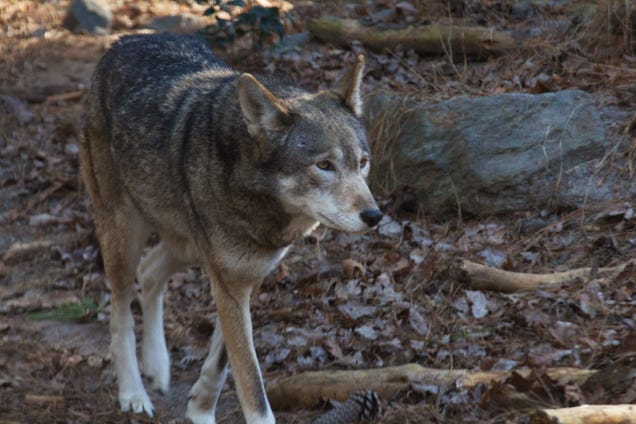
Uncertain Future
There are many challenges still facing the recovery of red wolves in the wild. The expansion of coyotes, which may interbreed with red wolves and occupy a similar niche,
pose a significant hurdle. Also, because of their similar appearance to
coyotes, red wolves are often mistaken for their smaller relatives by
hunters, with each misidentification a heavy blow to the population.
Death by gunshot is the number one cause of death for red wolves.
The Federal
government is unsure of what its next move will be in the recovery
effort. US Fish and Wildlife have issued a full review of the program,
with a decision expected in early 2015, stating that all options on the table. What that means exactly remains unknown. "We are nervous", said Kim Wheeler, Executive Director at the Red Wolf Coalition based in North Carolina, whom I spoke with by phone. "I think every red wolf supporter is nervous."
"I think
the three options on the table are: to cancel the program; pull the
animals back to federal property; or leave the program as is, with
changes. I hope it's the third...we hope they'll do the right thing."
Driving
home through rural Maryland, snow covering the quiet forests and fields,
I couldn't help but notice the flocks of geese numbering in the
hundreds crossing the clear sky. As dusk approached, deer and turkey
crept out from cover; the wind swaying the leafless trees.
Our eastern
forests have come so far after an unmeasured past. Wildlife
populations have rebound; our forests have regrown. But there is still
something missing.
"In my opinion," said Wheeler, "it's the howl. It's that sound and knowing that that voice could have been silenced."
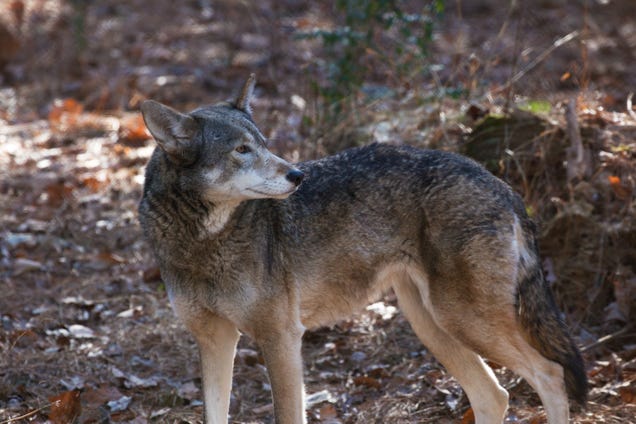
Photos: Gareth Wishart


No comments:
Post a Comment